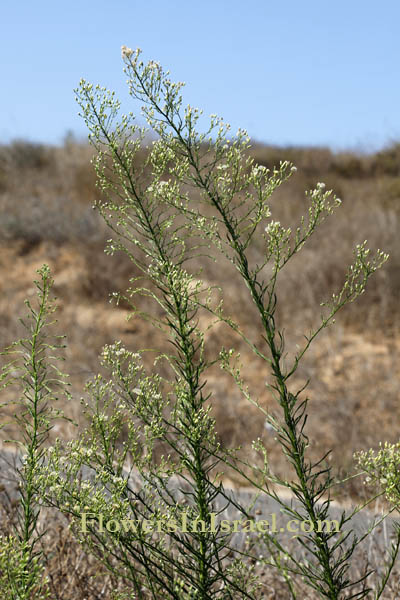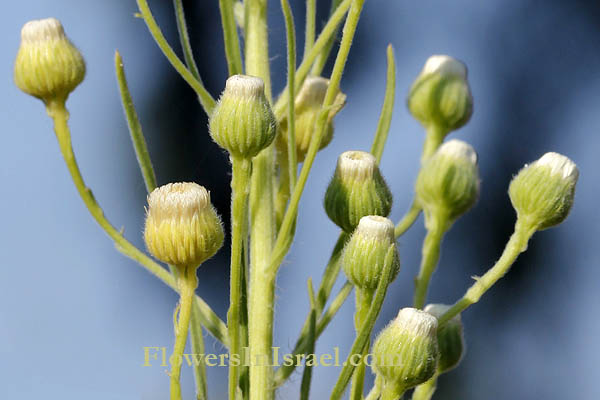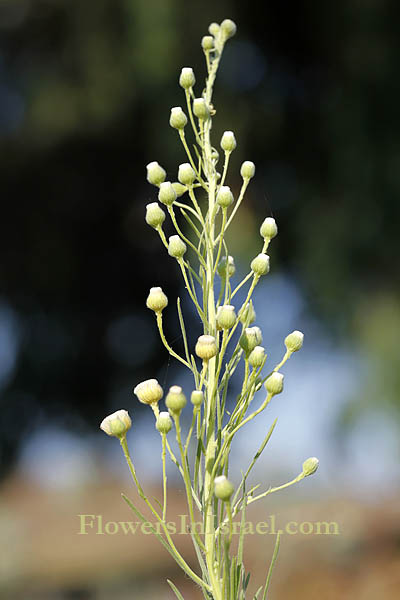Canadian Horseweed, Canadian Fleabane, Hebrew: קייצת קנדית, Arabic: شيخ الربيع
| Scientific name: | Conyza canadensis (L.) Cronquist | |
| Synonym name: | Erigeron canadensis L. | |
| Common name: | Canadian Horseweed, Canadian Fleabane | |
| Hebrew name: | קייצת קנדית | |
| Arabic name: | شيخ الربيع | |
| Plant Family: | Compositae / Asteraceae, מורכבים |

|
| Life form: | Annual | |
| Stems: | Erect, main stem branches only in the upper half; lateral stems shorter than the central stem | |
| Leaves: | Alternate, entire, glabrous to densely covered with short stiff hairs | |
| Flowers: | Whitish flower heads that consist of 7-13 disk flowers surrounde by 20-40 ray flowers with ligules; phyllary midveins brown, conspicuously filled with raisin, glabrous to hairy | |
| Fruits / pods: | Achenes; pappus bristles mostly 2.5-3mm long, dirty white | |
| Flowering Period: | June, July, August, September | |
| Habitat: | Cultivated areas (weeds), Disturbed habitats | |
| Distribution: | The Mediterranean Woodlands and Shrublands, Semi-steppe shrublands, Shrub-steppes, Deserts and extreme deserts, Montane vegetation of Mt. Hermon | |
| Chorotype: | American | |
| Summer shedding: | Ephemeral |

Derivation of the botanical name: Conyza, konops (Greek), "a gnat", and used by Pliny as a name for some kind of a fleabane, or konis (Greek), "dust", its powder being used to kill fleas. canadensis, referring to Canada. Erigeron, Greek, er, spring; geron, an old man; suggested by the hoariness of some vernal species.

|